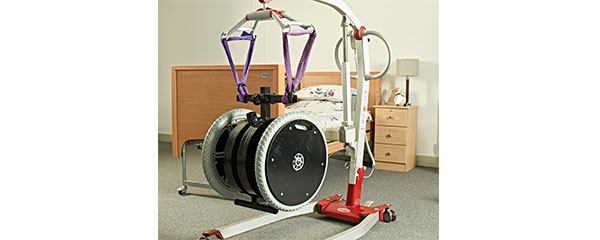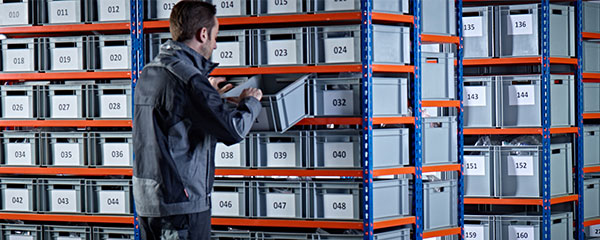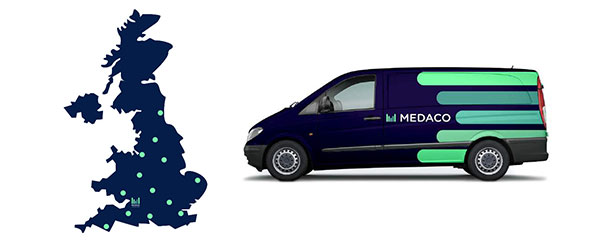5 Factors that Affect the Cost of Planned Preventative Maintenance (PPM) Service Rates
12 Minute Read
Costs | Healthcare Equipment | LOLER | Patient Handling Equipment | PPM | PUWER | Regulations | Service | Spare Parts
Customers often ask us “What affects the cost of Planned Preventative Maintenance (PPM) service rates and LOLER inspections?” While this question seems straightforward to answer, many variables influence the cost.
Whether you work in operations, estates, facilities or procurement, you’ll no doubt have the same goals as everyone else — to deliver the correct level of service within your agreed budget. This can include staffing and capital costs, as well as repairs and maintenance.
Care homes, hospitals and SEND schools are all under the pressure of squeezed budgets and increasing operational costs. So, we thought we would provide transparency on what is considered in the price of PPM service rates and LOLER inspections to help care providers in their quest to optimise their spending and create operational efficiency. The considerations below should help you make an informed decision regarding what you want to spend vs what you want from your provider.
If you’re unsure of the difference between PPM and LOLER, check out this article.
As we mentioned at the start, we want to be honest and transparent with you about what affects the costs of PPM service rates. The factors below highlight it is down to the quality of the maintenance and service provider and their investment in their organisation. Maintenance providers who are on the lower end of the pricing scale can offer a basic service for a basic price. Whereas higher-end suppliers have typically invested in their people, processes and physical resources to offer comprehensive solutions that meet their customer’s needs. As expected, this solution will cost more but comes with additional benefits that justify the costs and offer more value.
The solution you choose will depend on your budget, preferences and requirements.
Let’s explore these factors:
1. Investment and Training of Staff Within Maintenance Company
Service and maintenance providers of patient handling equipment rely on the quality of their engineers and customer support staff to service their client base. Companies that invest in their staff can offer a higher quality of service and better customer experience. Experienced and well-trained engineers can diagnose issues and fix equipment quickly. This is beneficial to your organisation as it will reduce potential breakdowns and reduce the chances of return visits, however it may cost a premium for this quality of service.
Those with a smaller budget may benefit from maintenance providers who provide cheaper rates because they don’t invest as much. However, many organisations have found the savings from lower service rates are negated due to an increase in call-out rates, return visits and remedial work, as well as downtime of equipment.

2. Quality of the Resources
Companies that are passionate about the service they provide will not only invest in their people but also the processes and physical resources they need to service their customer base. Service engineers need good quality tools to carry out good quality work and the business requires good internal processes to manage the daily running of their customer’s contracts. For example, automated notifications that let you know in advance when your service date is due which ensures you remain compliant, or an online portal where you can access your service reports and have visibility over your assets.
Equipment Audit
Investment in these areas will ensure that your service and maintenance provider carries out a high-quality and timely preventative maintenance schedule. Whilst you may pay higher service rates upfront for these providers, you will ultimately reduce reactive maintenance costs and help to lower the lifetime cost of the equipment.
3. Spare Parts stock
Service and maintenance providers also need to invest in couriers and logistics companies so they can deliver spare parts to their customers and engineers on time. They also need to invest in stock to ensure that the right parts are in the right place at the right time. This is particularly important in the current climate where manufacturers are struggling with their availability of spare parts.
The benefits of investing in good stocks of replacement parts mean the maintenance provider can react quickly to the needs of their customers. For instance, by shipping available parts out on overnight delivery to their engineers, which they can then fit the next day. Unfortunately, in this industry it is not uncommon to wait long periods for replacement parts, so we recommend you partner with an organisation that understands the importance of investing in good levels of stock. This all works towards reducing the downtime of your equipment.

4. Efficiencies Within the Contract
Every care operator wants to run efficiently, meaning they make the best possible use of their resources, including their service and maintenance providers. By using a single provider for all your patient equipment servicing needs, you can benefit from improved efficiencies and cost savings within your contract. As you can leverage your buying power and negotiate better PPM rates. Not to mention the convenience of not receiving multiple service reports, invoices and communications from multiple suppliers.
5. What is included within the service and LOLER provided?
Service and maintenance providers of patient handling equipment vary significantly across the care industry and provide a variety of levels of service. One thing to remember when selecting a service and maintenance provider is to ask – what does each organisation carry out within the service and LOLER inspections?
For instance, do you know how long your service and maintenance provider takes to service a ceiling hoist and track, assisted bath or mobile hoist? Do you know the exact checks they carry out on each piece of equipment?

If you’re receiving low service rates, the maintenance provider may not be carrying out all the checks recommended by the manufacturer or spending enough time on each piece of equipment. Equally, if you find the service rates are higher than average, it is good practice to ask what they cover within their service, to justify the higher rates.
To find out what different service providers include in a LOLER inspection and annual service, check this blog post out. This highlights the fact that not all providers are the same and the way they service your equipment can be different. Make sure you have full visibility over what they are doing.
As with all the factors listed above, your choice of supplier and the rates you pay will depend on your priorities, preferences and requirements. You need to think about what is important to you, what level of service you require, and whether your budget is inclusive of potential breakdowns and remedial costs.
How to Compare PPM Service Quotes from Different Suppliers
If this seems like a lot to consider, you’re right! There are so many factors that affect the PPM service rates you’ll receive, which means it is important that you understand your quotations before comparing them. Of course, you’ll be looking at price to make sure it fits with your budget but this shouldn’t be the only factor when selecting a patient handling equipment service and maintenance provider to partner with.
Also, consider:
The Cheapest in the Short Term isn’t Always the Cheapest in the Long Run
An enormous challenge for care home operators is to maintain their budgets without compromising on care. You need to look for ways to save costs whilst also maintaining a safe and well-managed care home. Nobody wants to cut costs and put their residents and staff at risk.
That’s why, with service and maintenance providers of your care equipment, you need to be aware of not only the upfront cost but the ongoing costs of the contract. Often organisations can be tempted to spend less budget on ‘proactive maintenance’, thinking that they are saving money, only to find out that they have spent more on ‘reactive maintenance’. The cost of unplanned and reactive maintenance includes call-out charges, the cost of parts, shipping and further work, as well as the time lost responding to the callout and diagnosing faults whilst the equipment is not working.
A service and maintenance provider who may seem the cheapest at first might end up costing you more in the long run with the frequent call-out fees and high priced spare parts. On the other hand, a more expensive provider may save you money in other areas of the contract and provide additional benefits. Therefore it is important to ensure you understand both the needs and priorities of your organisation, along with what exactly your service provider is promising to deliver.
Are you Ready to Explore Service and Maintenance Solutions for your Care Home, Hospital or SEND School?
As you can see, multiple factors influence the costs of PPM service rates amongst different suppliers. Care facilities have plenty of options to explore when searching for a trusted service and maintenance provider who is good value for money.
Our intention for this article is to highlight the elements that affect the costs of PPM service rates so you can select a service and maintenance provider that is right for you and your organisation. Given the challenging time that everyone is facing, especially in care, you need transparent information to help you make informed decisions when it comes to partnering with the best provider for your business.
If you find yourself on the search for another service and maintenance provider or just need a second opinion, we’d love to be part of the conversation, so reach out to us and see how we can help.
You ask – We answer
This blog is from a new series focusing on ‘You ask – We answer’ where we aim to answer the hard-hitting questions our customers are asking. If you have a burning question you would like answered, just type it in the box below.
Interested in more articles like this? Sign up below to get notifications of new articles published.
If email isn’t your thing, follow us on our social channels for all the latest updates from Medaco.



